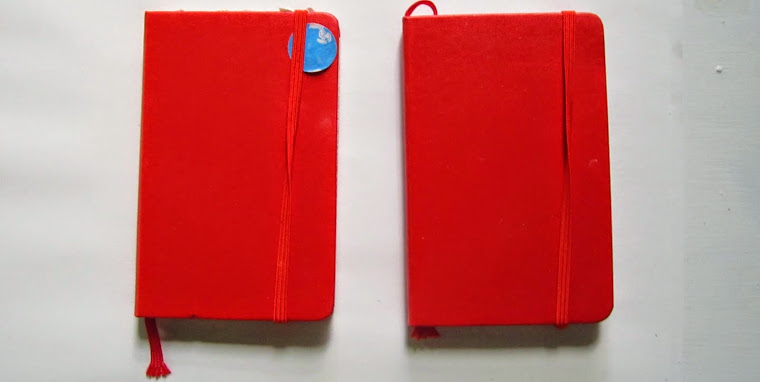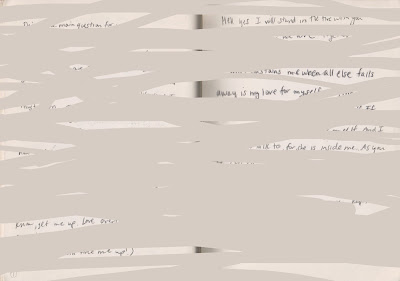Tereza
Mazur
Dr.Vinograde
EdPs
620 Human Development
July
12-16, 2004
Un-defining C r e a t i v i
t y
Stretching the Rules We Bind
Ourselves With
Sounds of
water spraying, birds chirping above, and wind rustling in the trees along with
the sound of children playing in the park are just a slight vision of our
understanding of creativity. The air
that passes through, in and out of our lungs even when we are not focused on
the process is a natural part of our organism making up this magical creation.
Many of the activities we do when we are absorbed in the present qualify as
part of the creative process: a boy jumping continuously reaching the monkey
bars, my hand writing upon this paper.
To become aware of the natural beauty is our only mission and a desperate
need if we want to create a different world from this one. Why the pressing
urgency?
" Most
of us have lost touch with nature. Civilization is tending more and
more toward
large cities. We are becoming more and more an urban people, living in crowded
apartments and having very little space even to look at the sky of an evening
and morning, and therefore we are losing touch with a great deal of
beauty" (Krishnamurti, 1983, p.33-34).
Creativity
is. "But thought in itself is
limited, therefore whatever it does is limited" (Krishnamurti, 1983,
p.16). Initially, we act creatively very
well, as young infants not acquiring knowledge but simply absorbing it (Gardner,
1993).
Page 1 of 5
Later we come close to this ideal
through our potential in the arts, sciences and through
spirituality. We want to know. What we are faced with is a vast expanse of
the unknown. We feel a part of this
vastness yet at the same time our universe cannot be conceived in our current
minds (Krishnamurti, 1983, p.25). Reasoning makes a theory fixed, inflexible
and this is not how the universe functions.
It is ever changing, limitless, organic and creative in nature, as are
all things within it. Many of our greatest
minds have followed this flow being centered in their nature. For example, Gardner (1993) states of
Einstein,
"Einstein
was a man of seeming contradictions: an individual in some ways young, in other
ways mature beyond his years; a nonbeliever who spent much time thinking about God;
a pacifist who stimulated the production of the most deadly weapon in history;
a scientific radical who spent his last years seeking to refute the radical new
scientific paradigm; a scientist whose own standards as a theoretician were
quintessentially aesthetic; an individual obsessed by the physical world, who
pondered timeless matters as well as the concept of time, yet also one who
devoted many hours to addressing the mundane problems
that beset
the humans of his era" (Gardner, 1993, p.130).
How do we, like Einstein, get closer to just
being and inadvertently knowing, sensing, living our potential? We have our hints in the child within when we
were closest to our natural, pure, fresh selves. When we were not concerned
with knowing although we learned more in those years than we do throughout our
entire life. Einstein himself declared "that we know all the physics that
we will ever need to know by the age of three" (Gardner, 1983, p.89). The more we learn to be in this absorbed
state, naturally,
Page 2 of 5
through the practice of such
activities as meditation or even running, the more open we will be to creative
energy as it flows throughout the world.
If
the concept of thinking back to the time when we were young does not remind us
of our potentialities, we are only to look upon the children around us
today. When working with and around very
young children, before our forced structure alters their nature, these young
ones shed great light on our tarnished society.
They explore genuinely as well as laugh and cry with all their heart. And still see the beauty of a flower or a
leaf. They can create the most beautiful, peaceful world that we innately have
within us. Too bad we have not yet
learned to listen and see children, thinking them smaller and therefore less. Their potential is hugely undermined. We set our limits upon their learning in an
outlined time frame that often does not correlate with their, or our for that
matter, inner creative cycle.
"From
some points of view education has done its task; looking around us
today,
we can see great material gains. But serious
questions can be raised
about how
much we have been able to educate beyond the making and consuming of objects.
Have we in our educational system really put emphasis upon human values? Or
have we been so blinded by the material rewards that we have failed to
recognize that the real values of a democracy lie in its most precious good,
the individual?" asks Viktor Lowenfeld in the art educator's bible, Creative and Mental Growth, p.3.
How
do we in this society come to adulthood with our artist-self intact? When and
how do we loose those childhood ideals and the sight of our infinite potential?
And most importantly through rediscovering ourselves is it possible to create
something different
for us than our concrete-mechanical
jungle? On these topics I can only speak
from
Page 3 of 5
my heart through my own
experience. I entered the art class on a
whim my senior year in high school, very late in terms of going on with this
career. I found myself utterly absorbed,
and being alone, without my best friend and sister who moved half way around
the world, art became a source of support.
I drew from what I knew throughout the next decade or so and this being
mostly suffering, I created only that in my work. Images came from horrors found in newspapers;
the process was used as a source of coping.
Sacrificing myself for the pain of others, I thought, was the most love
I could give. In reality it was an
escape of the source of pain within myself and a lack of compassion for my own
suffering, feeling it relative to everyone else's. This dual thinking made a
separation and kept everybody at a distance, seeing everyone as an
'other'. In Cape Town I glimpsed the
rays of everyone's light even through centuries of blockage and restraint. It is thanks to the process in and of South
Africa that I paralleled after listening, converting my pain, healing. I am now
free to create the kind of world I want to see.
Through my experience of teaching
art for the past three years to over twelve hundred youngsters between the ages
of five and thirteen, I have been privileged to observe children at play.
Through this I conjured up a feeling of pure delight. With the help of children, I have seen an
aspect of my true potential of being a teacher, of being a beautiful human
being. Our children and we need a
creative environment to develop in. Their life is too short, as is ours. Through just this our world can turn into an
entirely positive place. Let's support ourselves in this continuous growth!
Page 4 of 5
Tereza Mazur
Dr.Vinograde
EdPs
620 Human Development
July
12-16, 2004
Un-defining C r e a t i v i
t y
Stretching
the Rules We Bind Ourselves With
NOTES
Gardner,
Howard. Creative minds: An Anatomy of Creativity Seen Through the Lives of
Freud, Einstein, Picasso, Stravinsky, Eliot, Graham, and Ghandi.
BasicBooks, 1993, 87-131.
Krishnamurti,
Jiddu. On Nature and the Environment. Star Publishing, 1983, 33-39.
Krishnamurti,
Jiddu and David Bohm. The Future of Humanity: A Conversation. Harper
& Row, 1986, 5-51.
Lowenfeld,
Viktor and W. Lambert Brittain. Creative and Mental Growth: Fifth Edition.
The Macmillan Company, 1970, 1-19.
Page 5of 5















































